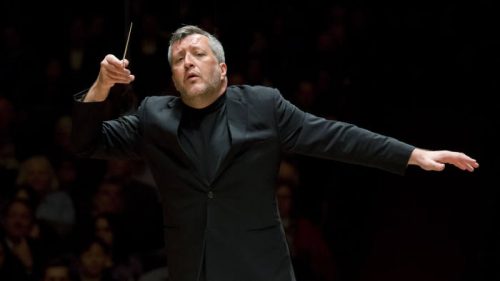Sibelius, Adès, Holst: Kirill Gerstein (piano), London Philharmonic Orchestra / Thomas Adès (conductor), Royal Festival Hall, London, 23.10.2019. (AK)

Sibelius – Night Ride and Sunrise, Op.55
Adès – Concerto for Piano and Orchestra (UK premiere)
Holst – The Planets, Op.32
There may be several arguments for including Sibelius’s Night Ride and Sunrise and Holst’s The Planets at the London Philharmonic Orchestra concert which featured the UK premiere of Adès’s Concerto for Piano and Orchestra. However, for me the most likely connection between the three works is the large orchestral forces needed for each. There was no shortage of vast volume of sound as well as instrumental colours of all kinds throughout the evening. In The Planets we even heard rarely used orchestral instruments such as the alto flute, bass oboe, euphonium and celeste.
I understand the rationale of the non-stop repetition of dotted quaver/semiquaver motive at the outset of Sibelius’s ride. But the physical demand on the string players (minus bass) during this long passage – which seemed tiring as arguably a ride should feel – was enormous. The wind players also had their share of ever repeating exhausting patterns. No disrespect to Sibelius but Wagner’s Ride of the Valkyries is very exciting without causing such discomfort to his performers. I hugely appreciated the arrival of Sibelius’s sunrise heralded by witty woodwind bird song motives, followed by warm sonorities of the strings and a brass hymn. Hats off to the orchestra for their performance but hopefully they won’t have to play this piece too often.
What I liked most about Adès’s new Concerto for Piano and Orchestra is that it is what it says: a piano concerto. Adès treats the piano with respect for the instrument’s qualities. There are no gimmicks such as, for instance, plucking the strings of the piano or hitting the piano’s frame or any other non-pianistic gestures. Adès’s music is Adès but I could not help being reminded of Bartók’s first two piano concertos and Stravinsky’s Concerto for Piano and Wind: Adès is a noble follower of their tradition. The extensive horn melody (with the horns separated by dissonant intervals) over the piano’s vigorous exploration of the keyboard towards the end of the first movement may be an example of the Stravinsky-Bartók tradition. So is the dialogue between the initial brass/wind hymn and the melodic response of the piano in the second movement. It is a shame that – at the conclusion of the first movement – the large, passionate orchestral sound buried the hard working pianist. However, the conclusion that is the winding down of the second movement was magical. In the third movement everybody was at it: syncopation against other rhythms, counterpoint, imitation, modulation, bitonality and other exciting elements. After a temporary slowing down of emotions the final climax seemed to be banging for the end of world.
The American-Russian pianist Kirill Gerstein, the dedicatee of the concerto, is a heavyweight player with a strong affinity not only with the music of Adès (whose compositions he regularly performs) but also with the romantic tradition of piano playing. Liszt meets Adès in Gerstein who performed Adès’s virtuoso concerto part with ease, musicality and from memory. On the other hand, Adès conducted the concerto from his score, presumably owing to the intricacies of the orchestral parts. Composer/conductor and soloist spoke the same musical language throughout: under the circumstances this was expected but it was still a privilege to witness.
In terms of volume of sound Holst won the accolade of being the loudest. Holst was not sparing with the number of instruments suggested in his score. Apart from its large body of strings (of sixty-four players), the LPO also mustered another forty-five players with over fifty instruments between them. I do not know if Holst envisaged a very large stage for his monumental ‘suite for large orchestra’ but on this occasion some of the horn players and all bassoon players must have had a difficult time sitting directly in front of the six timpanis. Their volume was enormous in the first and fourth movements (Mars and Jupiter respectively), sounding exceptionally loud even in the auditorium, let alone sitting directing in front of them.
There was plenty of tenderness too. The first twenty-six bars of Saturn with repeated tone intervals between harp and flute reminded me of the dissonant horn melody in the first movement of Adès’s piano concerto. Principal first violinist (Pieter Schoeman) and principal cellist (Pei-Jee Ng) managed some beautiful cantilena contributions and the ladies of the London Philharmonic Choir provided a spell-binding ending with their voices growing fainter and fainter on conclusion of Neptune.
Thomas Adès the conductor is fully committed to whatever he conducts. His knowledge of the scores is impeccable; he seems very reliable with giving directions. There are no populist gimmicks in his approach to conducting, his interpretations are fully honourable. However, I missed some subtleties which might have been forthcoming in a different programme. I am looking forward to hearing Adès’s musicmaking in a different repertoire.
Agnes Kory
